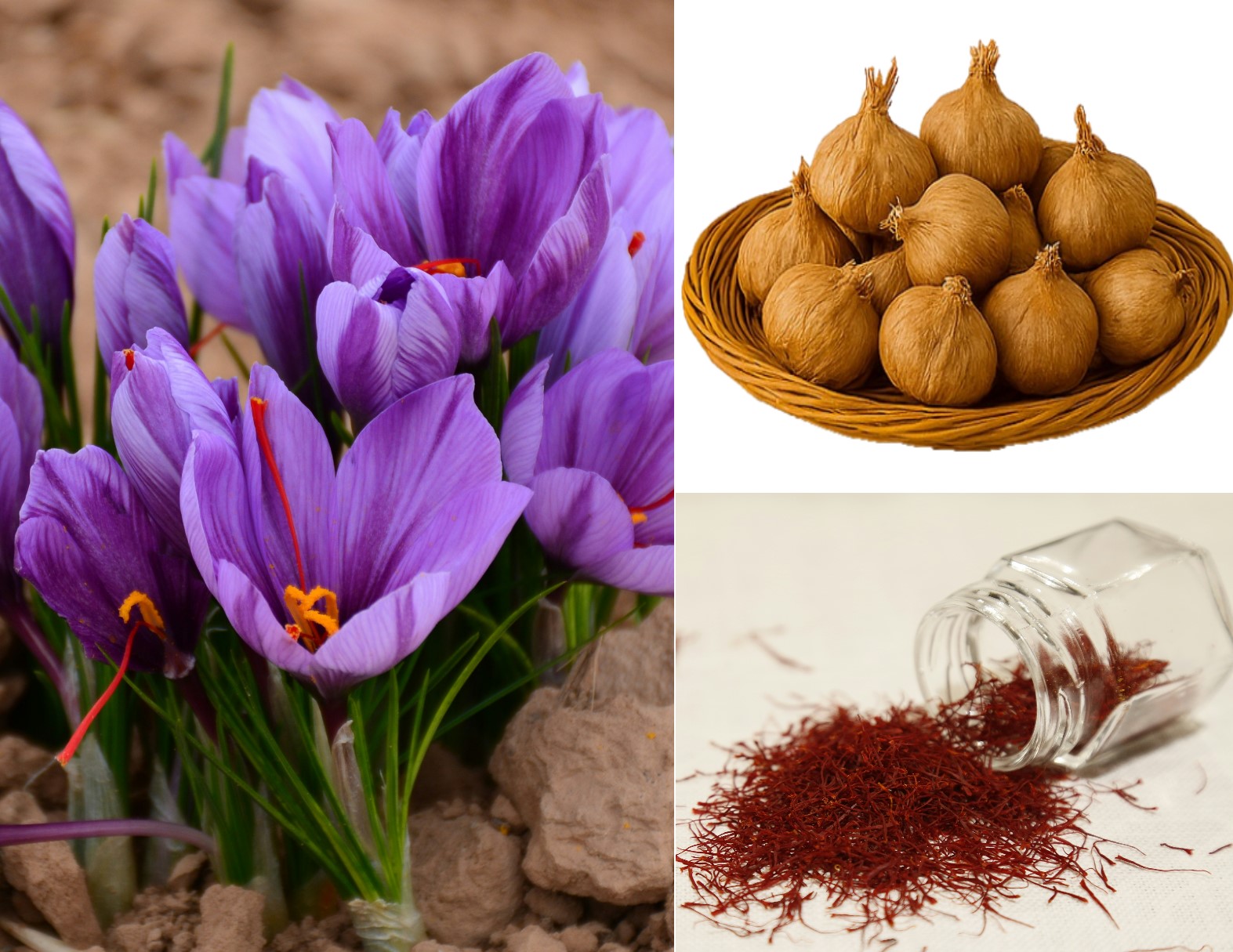FREE SHIPPING ON ORDERS OVER $99
Orders for 2025 closed - NOW taking pre-orders for 2026 fall season only

Large Saffron Bulbs - 15 Count (PRE-ORDER for FALL 2026)
Grow saffron at home
$19.99
Taking PRE-ORDER for FALL 2026 NOW! - Ships in Sept 2026.
Experience the luxury of homegrown saffron with our premium Saffron Crocus bulbs that are guaranteed to bloom in first year. Each bulb produces stunning, vibrant violet-purple flowers adorned with rich red stigmas—the source of the exquisite saffron spice renowned for its flavor and aroma. These top-quality bulbs are perfect for gardeners and culinary enthusiasts looking to cultivate their own saffron, whether in a garden bed, container, or greenhouse. Bulbs are carefully selected for robust growth, ensuring high yields of aromatic saffron each season. Flower color: deep purple petals with vivid red stigmas. Add a touch of elegance and flavor to your garden and kitchen with this unique harvest. Very low maintenance and care needed.
Comes with detailed instructions for planting and harvesting, plus expert tips to ensure a successful and rewarding saffron-growing adventure. Whether for garden enthusiasts, culinary creatives, or lovers of rare botanicals, this is a gift that grows — season after season.
Cultivate beauty. Harvest gold. Experience saffron like never before.
Saffron Growing Timeline and Care:
Saffron is Fall blooming flower and prefers hot, dry summers and short, mild winters. A drop in temperature after the summer heat is essential to wake the bulbs and initiate the flowering process. The bulbs need well-drained soil to prevent rot and a lot of Sun.
Saffron can be grown in USDA Zone 4 to 10 - grows best in USDA zones 6-8, with zone 4-5 requires careful winter protection and zone 9-10 requires summer management.
📅 Late August – September: Planting
Plant in well-drained soil, full sun.
Depth: 4 to 6 inches
Spacing: 2 to 4 inches apart
Water after planting if the soil is dry.
📅 October - November: Flowering
Flowers last 1–3 days.
Harvest at dawn (before sun damages the stigmas).
Carefully pluck the red stigmas.
Tip: Dry stigmas and store in airtight containers away from light and moisture. The flowers with stigmas can be kept indoor to air dry – the fragrance from the flower will fill the room with sweet aroma.
📅 November – February: Foliage Growth (Photosynthesis Phase)
Green, grass-like leaves grow.
Photosynthesis begins to replenish corm energy for next year.
Keep watering lightly but regularly if rainfall is insufficient.
📅 March – May: Foliage Matures & Dies
Leaves yellow and wither by late spring.
Do not cut leaves early - they feed next year’s flowers.
Reduce watering as dormancy begins.
📅 June – late August: Dormancy
Foliage dies back completely. No watering is needed.
Corm Multiplication
Each mother corm produces 2–8 new cormlets yearly.
Corms multiply underground during the foliage period (Nov–April).
Replant or separate corms every 3–5 years to maintain productivity
